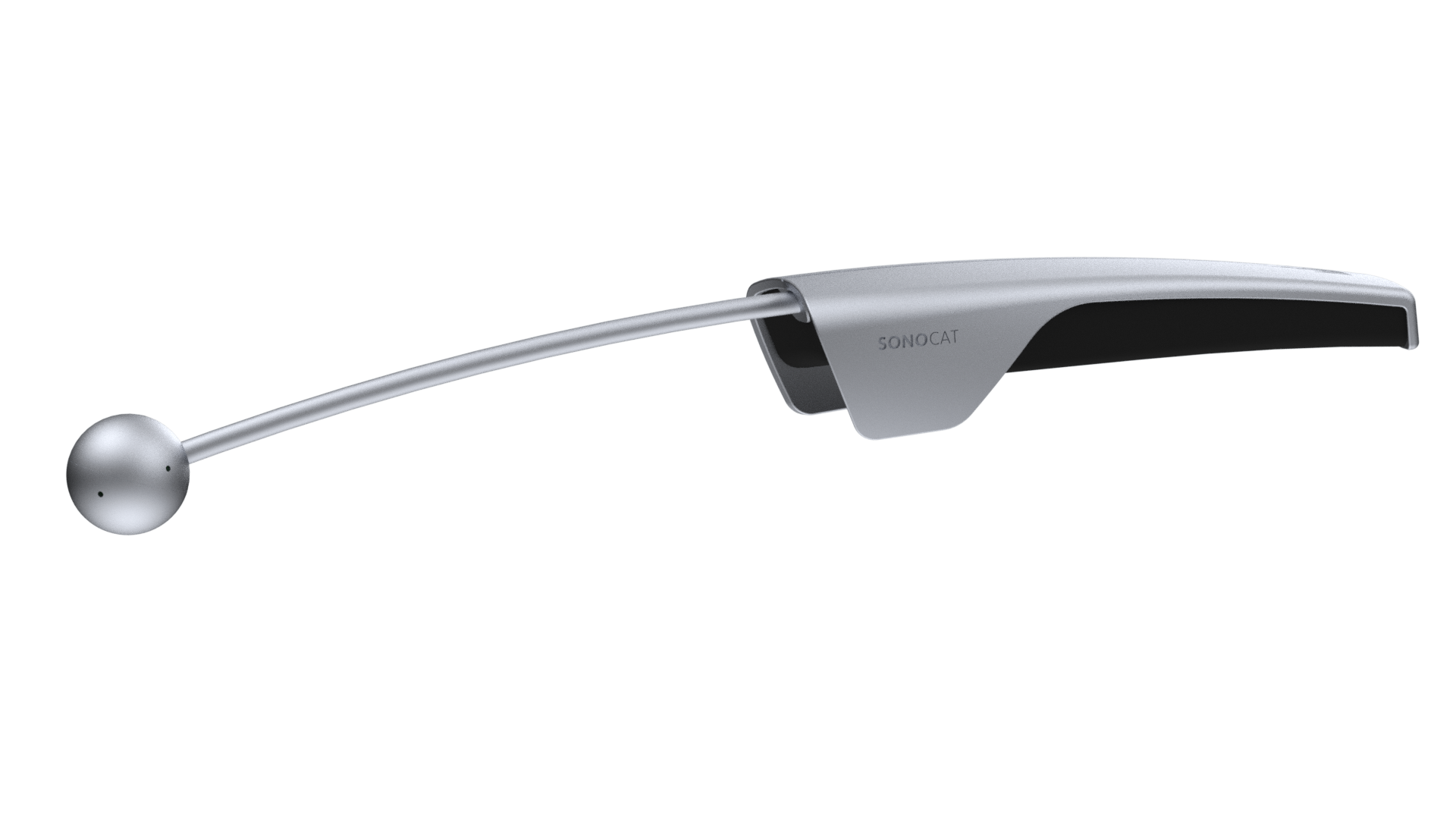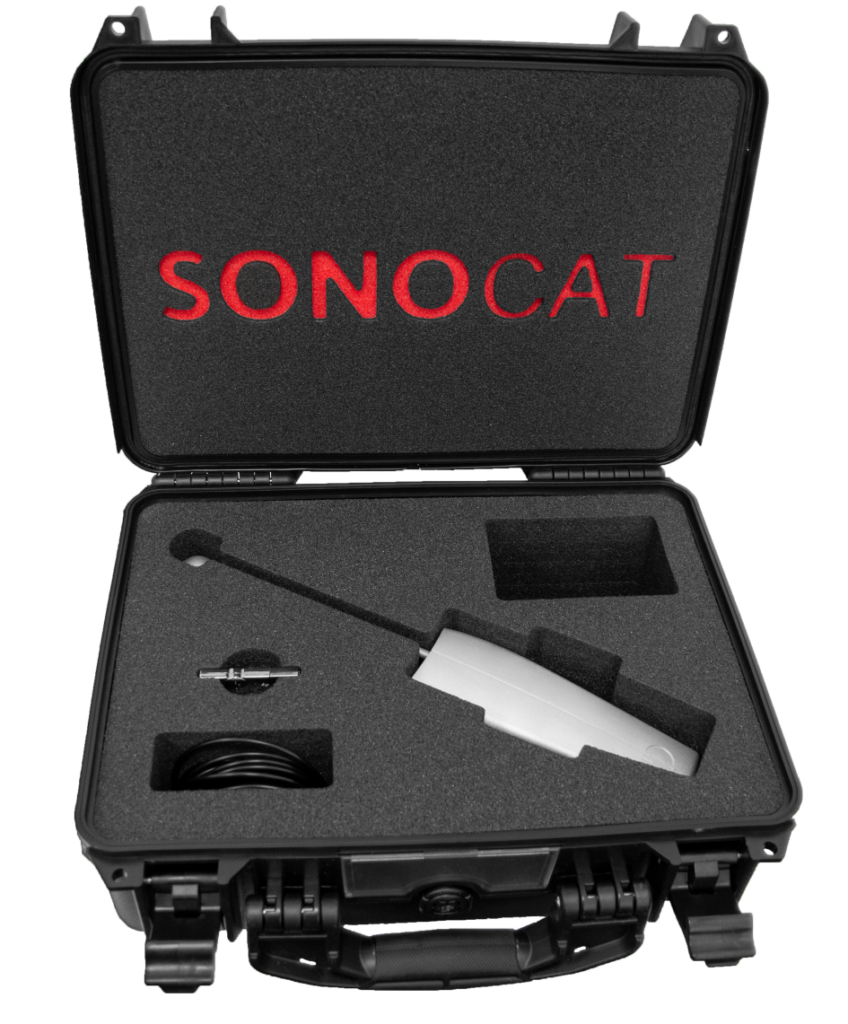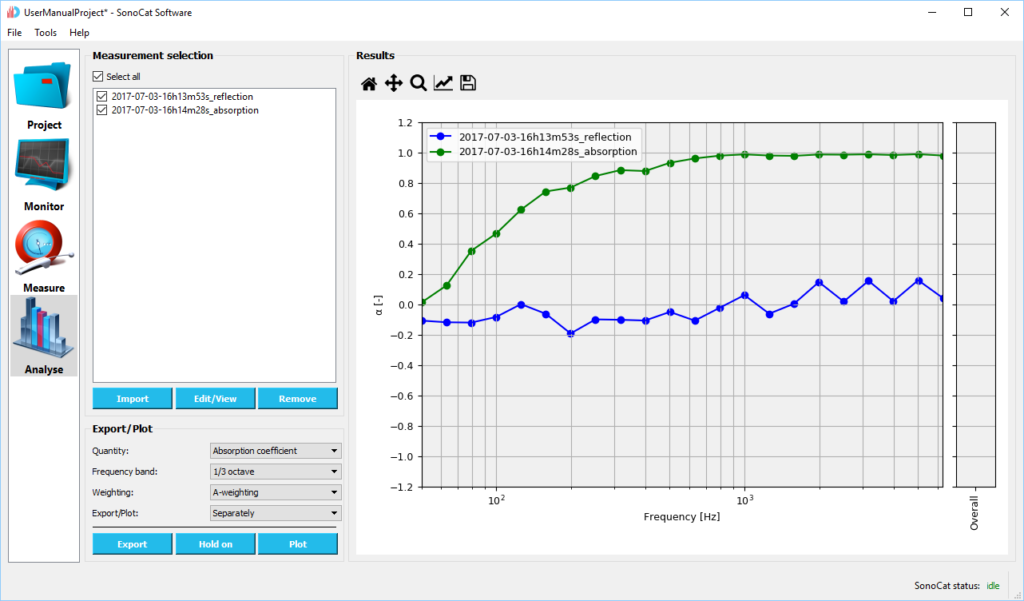The Sonocat

The Sonocat is an advanced acoustic measurement instrument designed for capturing and analyzing the most complex sound fields. Featuring a spherical array of eight MEMS microphones and integrated acquisition hardware. The device enables users to measure a wide range of acoustic parameters, including sound pressure, particle velocity, intensity and impedance in 3D. It comes equipped with user-friendly software that allows for real-time monitoring, recording, and analysis of the captured sound data.
One of the Sonocat’s most remarkable features is its ability to separate incident (immited) and reflected (emitted) sound, without relying on global sound field assumptions. This enables the Sonocat to measure the sound absorption coefficient of materials, as it is used in the application, and transmission loss of partitions, like noise barriers. This makes it the only handheld device capable of measuring in-situ acoustic properties without requiring an artificial sound source.
Experience precision, versatility, and efficiency like never before with Sonocat.

Features
- Sound Absorption
- 3D Sound Intensity
- Sound Power
- Particle velocity
- Sound Transmission
- Sound Pressure
Sound Absorption
In-situ sound absorption measurements with the Sonocat provide real-time, spatially averaged absorption values. Measure absorption of acoustic materials, including complex-shaped noise barriers and diffracting elements.
3D Sound Intensity
The Sonocat can measure the sound intensity level and direction in 3D. This can be used to determine the location of sound sources, for example. It is not always obvious where the sound is coming from or which source has the highest contribution to the noise.
Applying the theory of sound propagation around a rigid sphere enables the SonoCat to account for the most dominant scattering that impacts the measurements. It is therefore possible to estimate the 3D sound intensity vector and sound pressure level as if the SonoCat was not in the field,
Sound Power
The sound power measurement solution provided by Sonocat is incredibly simple to use. You can effortlessly rate and compare various noise sources with precision, while also monitoring multiple additional parameters simultaneously.
Partice Velocity
SVL is a useful measure of sound because it is directly related to the amount of energy in the sound wave. The higher the SVL, the more energy is in the sound wave, and the louder the sound will be perceived.
Sound Transmission
An ordinary intensity probe measures active intensity but with the Sonocat we can also measure incident intensity and reflected intensity.
Sound Pressure
The Sonocat is very capable in measuring Sound Pressure levels with certified compliance with international standards. Each microphone is calibrated to a higher precision than necessary for Class 1 microphones.
Sonocat software
The Sonocat is easy to use and the Sonocat software is dedicated to Sonocat measurements. It can be used on any Windows computer with USB. The software environment allows you to monitor, record and analyse data collected by Sonocat.
Sonocat software has four sections. Project, monitor, record & analyse. Each section has its own panel.
The project panel shows an overview of the project and the measurements.
In the monitor panel, various quantities of the sound field can be measured in real time.
For precision measurements, the measurement panel is used. Here, you have full control over all measurement parameters. And you can save measurements for analysis.
The analysis panel can be used to calculate, analyse, compare, combine or export measurement results.
For an impression of the software, you can view the screenshots in the gallery below.

In Situ Sound Absorption
Our most popular feature is In Situ Sound Absorption, a unique addition to your toolbox designed for professionals who want to examine real-world sound fields. “In situ” means you can take measurements directly on-site, in an existing environment, without needing specialized settings or setups like an impedance tube or an anechoic chamber. All you need is the Sonocat and its software.
Traditional methods for measuring the sound absorption coefficient rely on assumptions about the overall sound field affecting the test material, typically conducted in a controlled laboratory environment. However, in real-world settings, the sound field can be unpredictable and variable due to different sound sources. The ability of a material to absorb sound depends not just on its properties but also on the surrounding environment.
The sound absorption coefficient is defined as the ratio of active to incident sound power with respect to a surface. Traditional measurements assume that the material will perform similarly in both an anechoic environment and the field, which might not always be the case. Instead of considering the global sound field, the local-plane-wave method focuses on the local sound field, assuming that the normal component of the sound field at each point can be described by an incident and a reflected plane wave. By assuming local plane waves near the surface, we can derive the effective in-situ absorption coefficient from sound field measurements.
So, rather than bringing the material to a laboratory, we bring the Sonocat to the actual sound field, providing accurate, on-site sound absorption measurements.
- Measurements in real conditions
- Real-time results
- Easy handling
- No artificial sound source required
- All sizes
- All forms
- All materials
- Non-destructive
Download a brochure: Sonocat Brochure 2025
More information on the developers website: https://soundinsight.nl/

